 These photos show bizarre vintage inventions that quite often never caught on, but sometimes, they actually did.
These photos show bizarre vintage inventions that quite often never caught on, but sometimes, they actually did.
The weird inventions demonstrate ingenious efforts from the first half of the 20th century (and later) that helped people manage the pressures of everyday life.
Hundreds of thousands of patents are issued by the U.S. Patent and Trademark Office for new inventions every year.
Some of these creations, such as the lightbulb, transistor, cars, changed the world. Others have made everyday life a little easier, and some inventions are for things people never realized they needed.
However, despite numerous groundbreaking and useful inventions on the market, many other bizarre creations in history barely made it beyond their initial concept and never had any commercial success.
Perhaps they were way ahead of their time, impractical products, sometimes confusing and difficult to use, or simply didn’t make any sense commercially.

Wooden bathing suits, supposed to make swimming a lot easier. Haquian, Washington, USA, 1929.
An inventor is an entity that creates or discovers an invention. The word inventor comes from the Latin verb invenire , invent -, to find.
Although inventing is closely associated with science and engineering, inventors are not necessarily engineers or scientists.
The term invention is also an important legal concept and central to patent law systems worldwide. As is often the case for legal concepts, its legal meaning is slightly different from the common usage of the word.
In the United States, all patent applications are considered inventions. The statute explicitly says that the American invention concept includes discoveries, contrary to the European invention concept.
The European invention concept corresponds to the American “patentable subject matter” concept: the first test a patent application is submitted to.
While the statute virtually poses no limits to patenting whatsoever, courts have decided in binding precedents that abstract ideas, natural phenomena, and laws of nature are not patentable.

Stroller equipped with a radio, including antenna and loudspeaker, to keep the baby quiet; USA, 1921.

Clap Skate. In 1936, inventor R. Handl came up with the movable heel plate, but it wasn’t until 1996 that this concept revolutionized skating.

Piano especially designed for people confined to bedrest; Great Britain, 1935.

Hamblin Glasses. A pair of spectacles especially designed for reading in bed. England, 1936.

Electrically heated vest, developed for the traffic police in the United States, 1932. The power is supplied by electric contacts in the street.

A turntable linked to a film projector. It comes with single, dual and triple turntable. Designed by F.B.A. Prinsen, 1929.

Amphibious Bicycle. This land-and-water bike can carry a load of 120 pounds; Paris, 1932.

Car with shovel for pedestrians. Purpose: reducing the number of casualties among pedestrians. Paris, 1924.

Portable and Extendable Bridge. The emergency bridge can easily be transported on a handcart; invented by L. Deth. The Netherlands, 1926.

Faxed newspaper. In 1938, the world’s first wireless newspaper was sent from WOR radio station in New York City. In this photo, children are reading the children’s page of a Missouri paper.

Snowstorm mask. Plastic face protection from snowstorms. Canada, Montreal, 1939.

Revolver camera. A Colt 38 carrying a small camera that automatically takes a picture when you pull the trigger. At the left: six pictures taken by the camera. New York, 1938.

Comfort Lawn Mowers. The “Power Mower of the Future” is shown demonstrated on Oct. 14, 1957. The lawnmower has a 5-foot-diameter plastic sphere in which the rider sits on an air-foam-cushioned seat. It has its own electric generating system for operating running lights, a radio telephone, air-conditioning, and even a cooling system to provide a chilled drink on a hot day.

Glow-in-the-Dark Tires. In 1961, the Goodyear illuminated tire was revealed to the public. The tire was made from a single piece of synthetic rubber that was brightly lit by bulbs mounted inside the wheel rim.

Window Baby Cages. In this June 1937 picture, a nanny is seen supervising a baby suspended in a wire cage attached to the outside of a high tenement block window. The cages were distributed to members of the Chelsea Baby Club who had no gardens and lived at the top of high buildings. ( More photos and information ).

Pipe For Two. Two men demonstrate a pipe called the “Double Ender” in New York, June 2, 1949.

Suntan-Lotion Dispenser. Model Betty Dutter demonstrates how the spray nozzle is held on the new “Sun-Tan Lotion Dispenser” at the Annual Vending Machine Convention in Chicago on Jan. 19, 1949. A dime could get you a 30-second spray job. ( More photos and information here ).

Bald-Head Polishers. Ted Spence, an engineer at the Los Angeles Brush Manufacturing Corp., demonstrates the “Hairline Brush” on Jan. 12, 1950. The brush is constructed to fit a bald head’s contour, with bristles for brushing hair and a felt pad to gently massage the scalp.

Nuclear Bomb Shelters. In this Sept. 12, 1958, picture, a bomb shelter is shown that can hold eight to twelve people and would be safe to within three-quarters of a mile of ground zero if a 20-megaton nuclear bomb were to be dropped.

Desk Beds. In this 1913 photo, a schoolboy sleeps in a desk that also folds out into a hammock.

Vibrating Bras. A model is seen trying on a spiral electric bra at the “20th International Show of Inventions” in Brussels on March 13, 1971. The bra claimed to develop and strengthen the bust and was designed to vibrate while the person wearing it was at work.

Soup-Cooling Spoons. In this 1948 picture, a man is shown eating with a mechanical soup spoon designed to cool a bowl of scalding hot soup.

See-Through Boats. This 1941 photo shows a model in a transparent “Lucite” rowboat, designed to see everything below the seat.

Automatic Tip Requesters. In this 1955 picture, inventor Russell E. Oakes shows off his “automatic tip requester,” which comprises an artificial hand and cashbox to be worn around the waist. A “No Sale” sign is displayed if a tip is not sufficient.

Monopod Seats. Designed to be easily transported, these 1953 monopod seats could provide a quick and easy place to sit when on the go.

Spaghetti Spinners. French inventor Alain Dham’s 1968 spaghetti spinner was designed to automatically rotate the noodles for easier pasta consumption.

Rocket-Propelled Bicycles. In this 1931 picture, a German engineer prepares his rocket bicycle with 12 rockets mounted on the back wheel. Moments after this photo was made, the bicycle exploded. Fortunately, the engineer was not seriously hurt. ( More photos and information here ).

Sunning Chairs. In 1964, a 10-year-old named Marne Smith came up with an easy way to avoid a crick in your neck after lying outside for a tan.

Jetpacks. Robert Courter soars through the air during a test of his flying jetpack in Ft. Myer, Virginia, on June 10, 1969.

Dashboard Coffeemakers. In this 1950 picture, a driver shows off his new dashboard coffeemaker, fixed upon the dashboard of his vehicle. According to the designer, the machine held enough water for three cups of coffee and can also be used for preparing soups, boiling eggs, or heating water for washing or shaving.

The Chain Smoker. Model Frances Richards smokes a pack of cigarettes all on one cigarette holder.

‘Ski-sailing’, a new sport invented in Austria, demonstrated in St. Moritz, Switzerland, January 1938.

Sunbathing with a foldable reflector, The Netherlands, 1961.
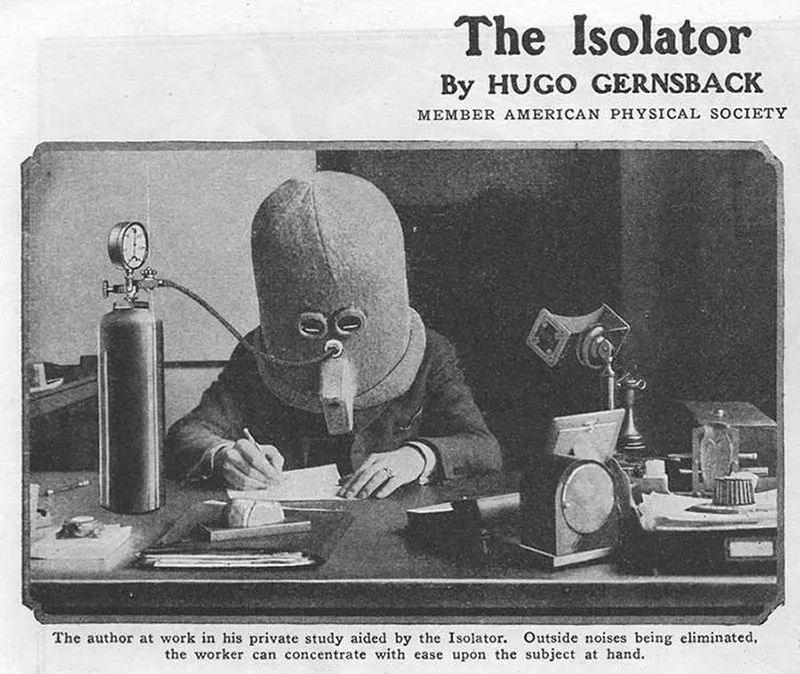
Anti-distraction helmet from 1925. The purpose of The Isolator was simple: the wooden helmet blocked out sound and vision in order to help the wearer focus on whatever task they had in hand. Gernsback claimed that the helmet reduced noise by up to 95 percent, and the tiny glass spy-hole ensured that no amount of nearby movement could rouse the wearer from their work.

Plastic hard bra for female factory workers. This special bra was made entirely from plastic to protect female factory workers during world war ii. The special women’s undergarment, made entirely of plastic, succeeded in the prevention of these certain occupational accidents.

A bike for the whole family. The four-position bicycle gave a family the opportunity to travel as a unit, , the invention also contained a built-in sewing machine for the mother.
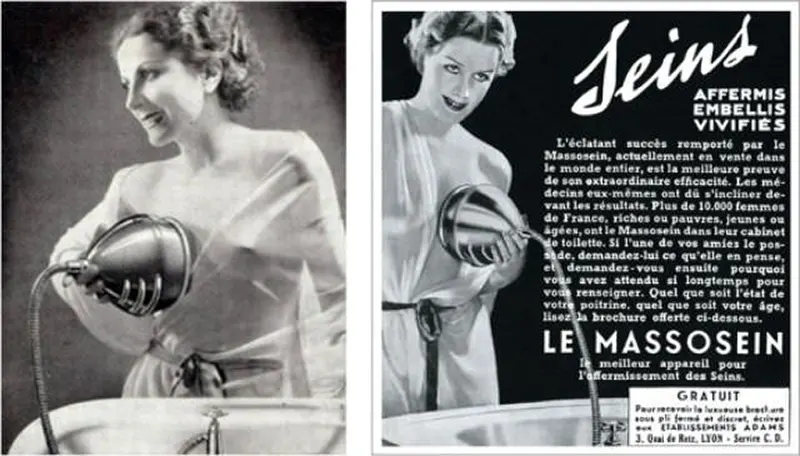
Breast Washer, 1930. This is a machine for massaging and/or washing breasts.

The Snogometer, 1965. Teenager Malcolm Pickard built a contraption to measure the voltage of snogs aptly calling it a “snogometer”. The loved up duo hold electrodes in their hands and their passionate snogging is measured with sound effects and a lighted scale.
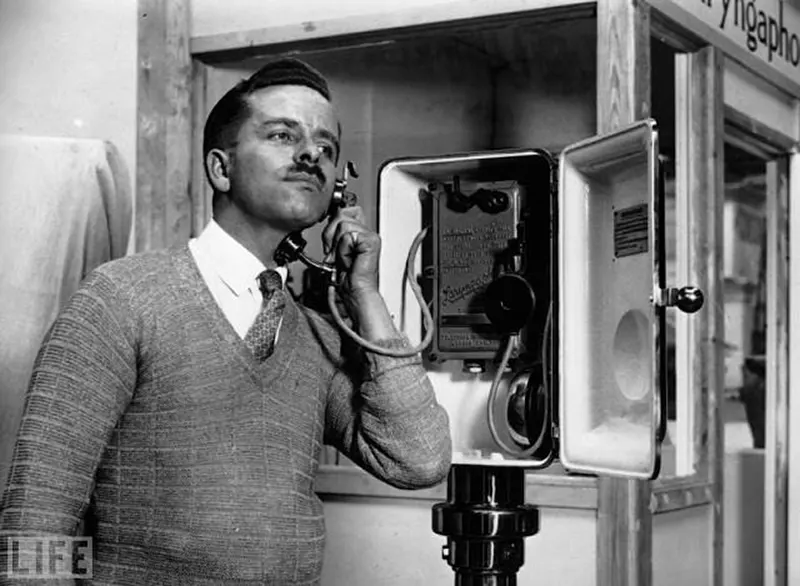
Laryngaphone, 1929. A noise-excluding telephone which only transmits vibrations from the vocal chords when the microphone is placed against the throat or cheek. For the man who wants to annoy both his wife and his mistress.
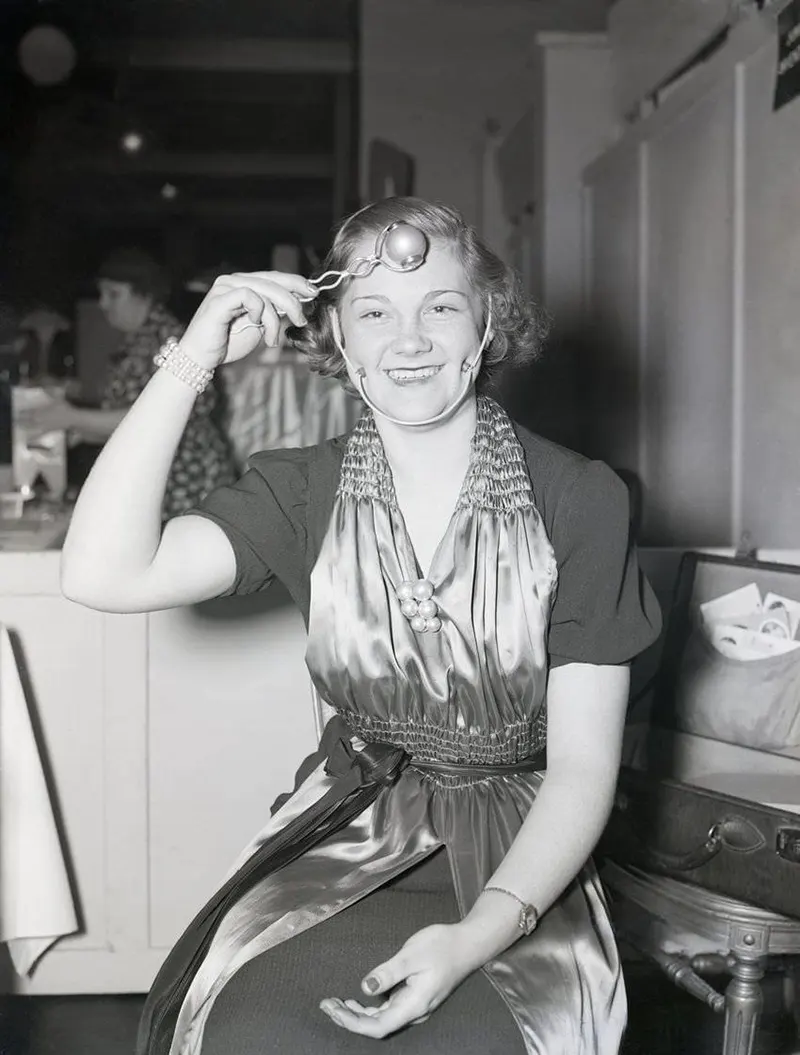
The dimple maker. It is a device that pressed holes into your face if you wore it for an extended period of time. Here, a young woman demonstrates a dimple machine at the Inventor’s Congress in Chicago.

The magical hat. You guessed it right, it didn’t work.
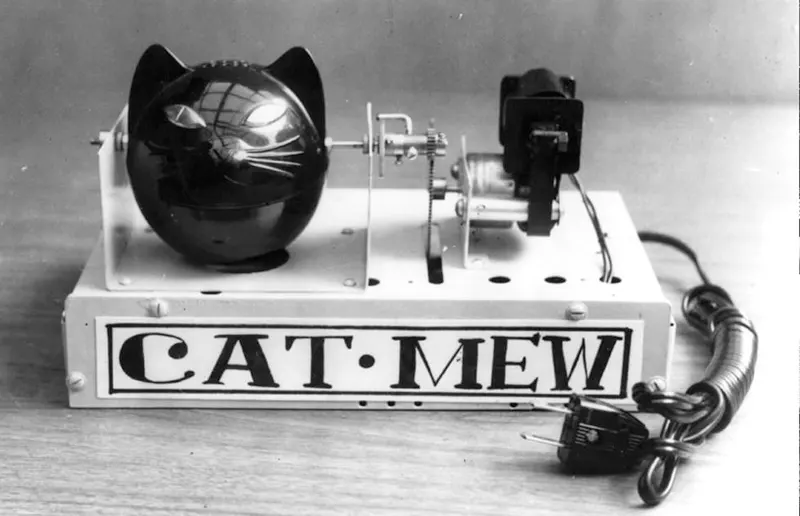
Cat Meow Machine, 1963. This 1963 mechanical cat meowing device from Japan can meow ten times a minute, with the eyes lighting up each time. The idea was to use the machine for scaring rats and mice.
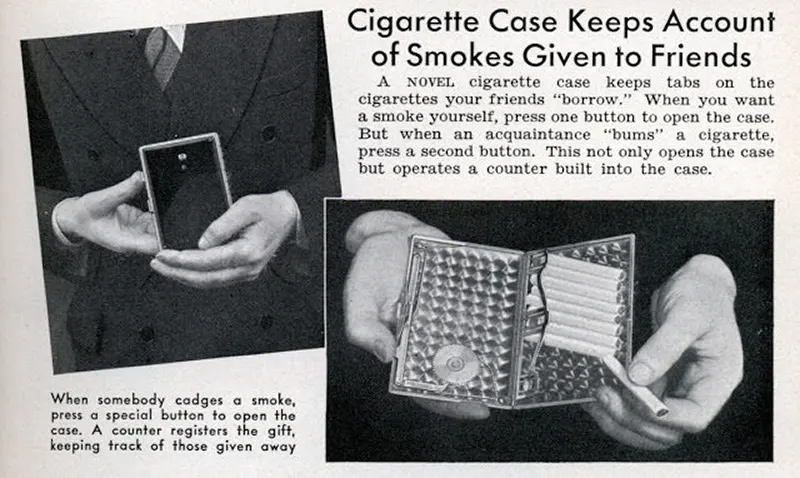
Cigarette Case to Keep Track. In 1940, smokers who were sick of loaning out cigarettes could keep track of how many smokes they were using themselves and how many were being “bummed” by friends. Two separate buttons opened the case: one for when the owner was grabbing a smoke, and another for when a friend asked for one. It was presumably up to the owner to decide what to do with that information once he determined how many of his cigarettes were being given away.
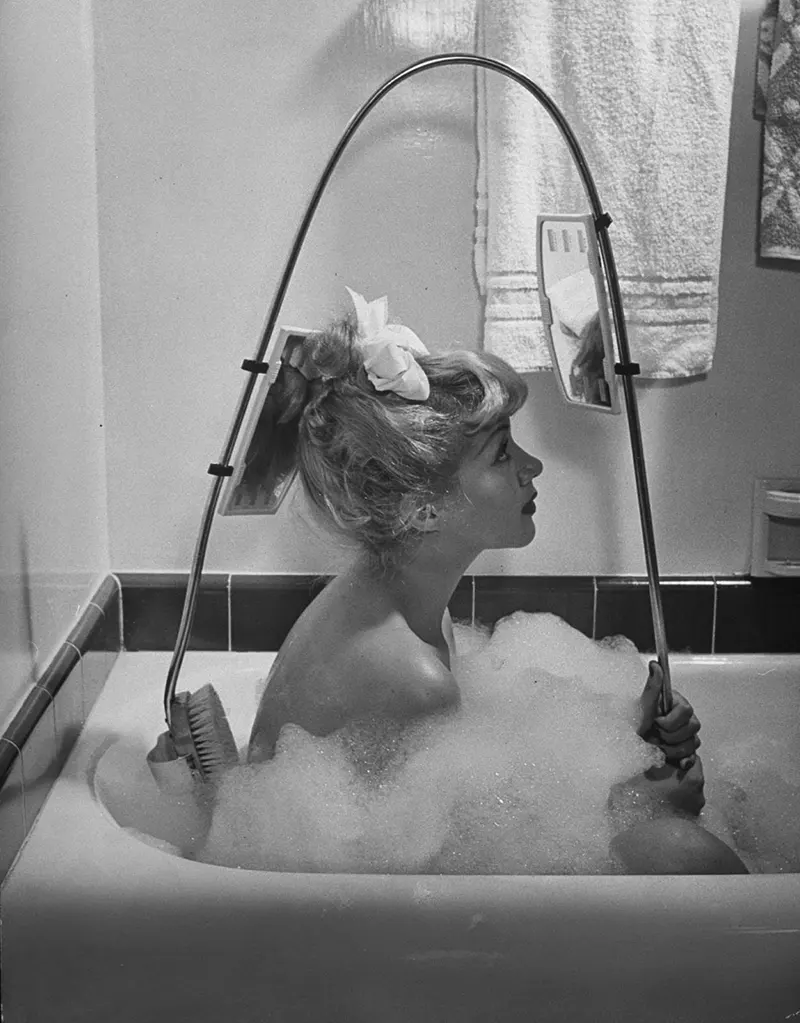
Back Brush.

Shaving Robot. This handy robot shaving assistant definitely isn’t a horrific accident waiting to happen.

Rainy Day Cigarette Holder, 1954. President of Zeus Corp., Robert L. Stern, smoking a cigarette from his self-designed rainy day cigarette holder.

Anti-Bandit Bag, 1963. Inventor John H T Rinfret demonstrates his anti-bandit bag. To foil thieves the chain is pulled and the bottom of the case falls out so the contents are scattered over the floor. That’ll stop those thieves from getting at the contents of your bag! No, wait. It won’t.
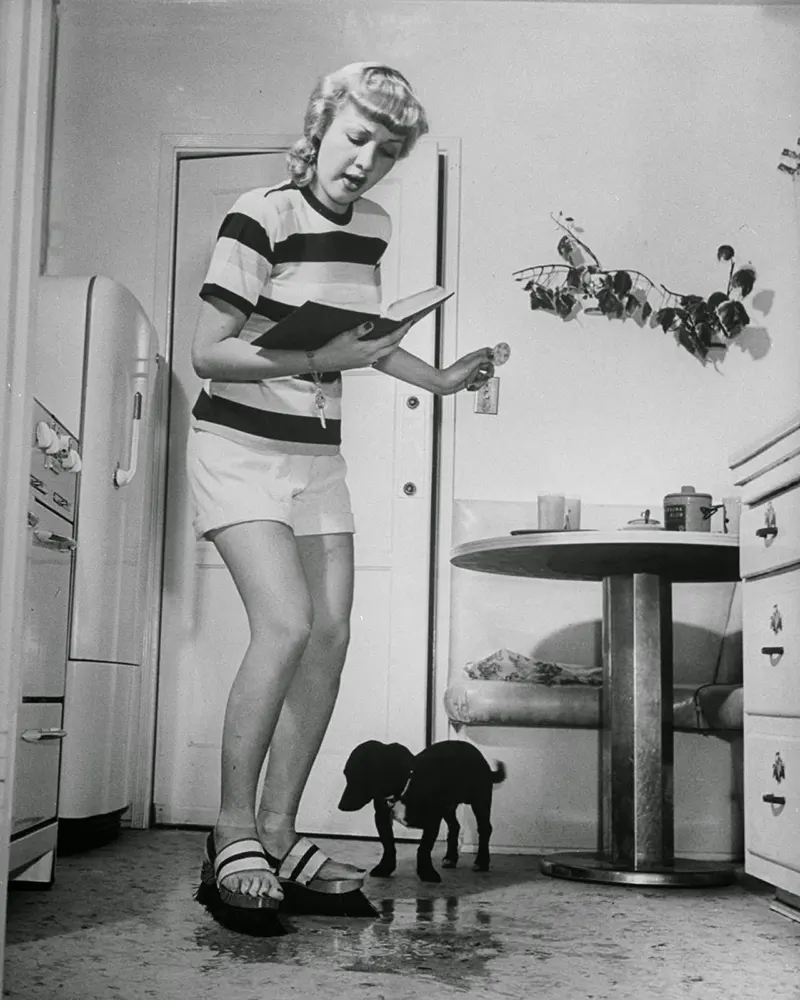
Feet-brush. Brushes on feet allow housewife to read while scrubbing floor.
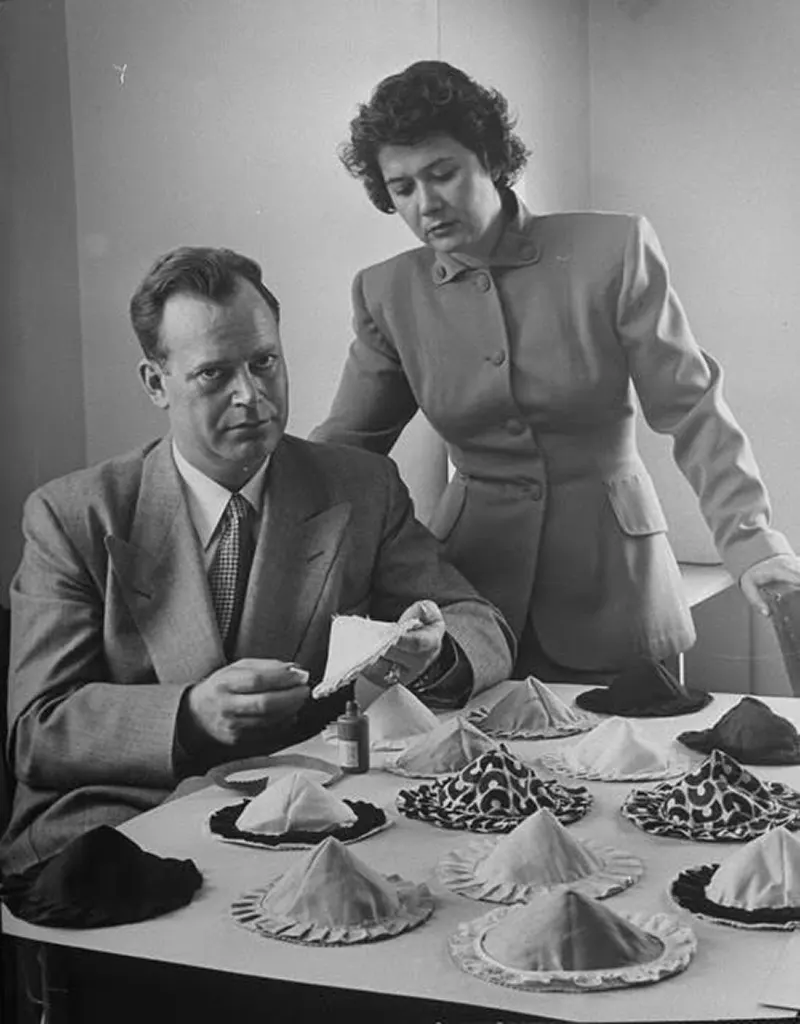
up Bras, 1949. Charles L. Langs poses with his strapless, backless, wireless, support-less bras. His wife is justifiably dubious. ( More photos and information here ).
(Photo credit: Nationaal Archief in Flickr / Buzzfeed / Getty / AP / Pinterest / Wikimedia Commons).


No comments
Post a Comment